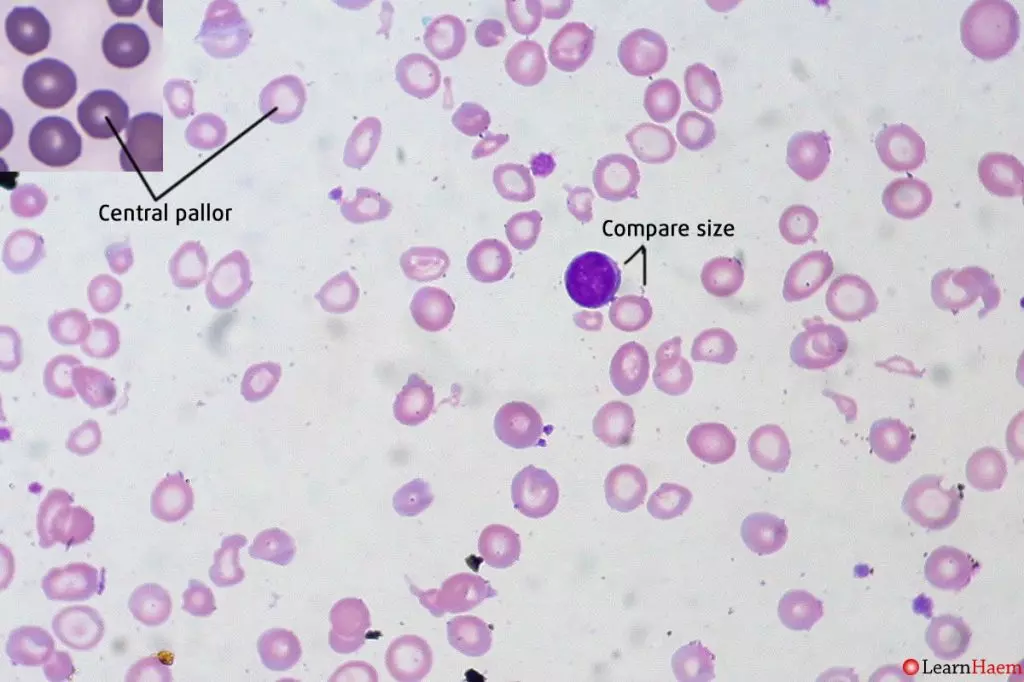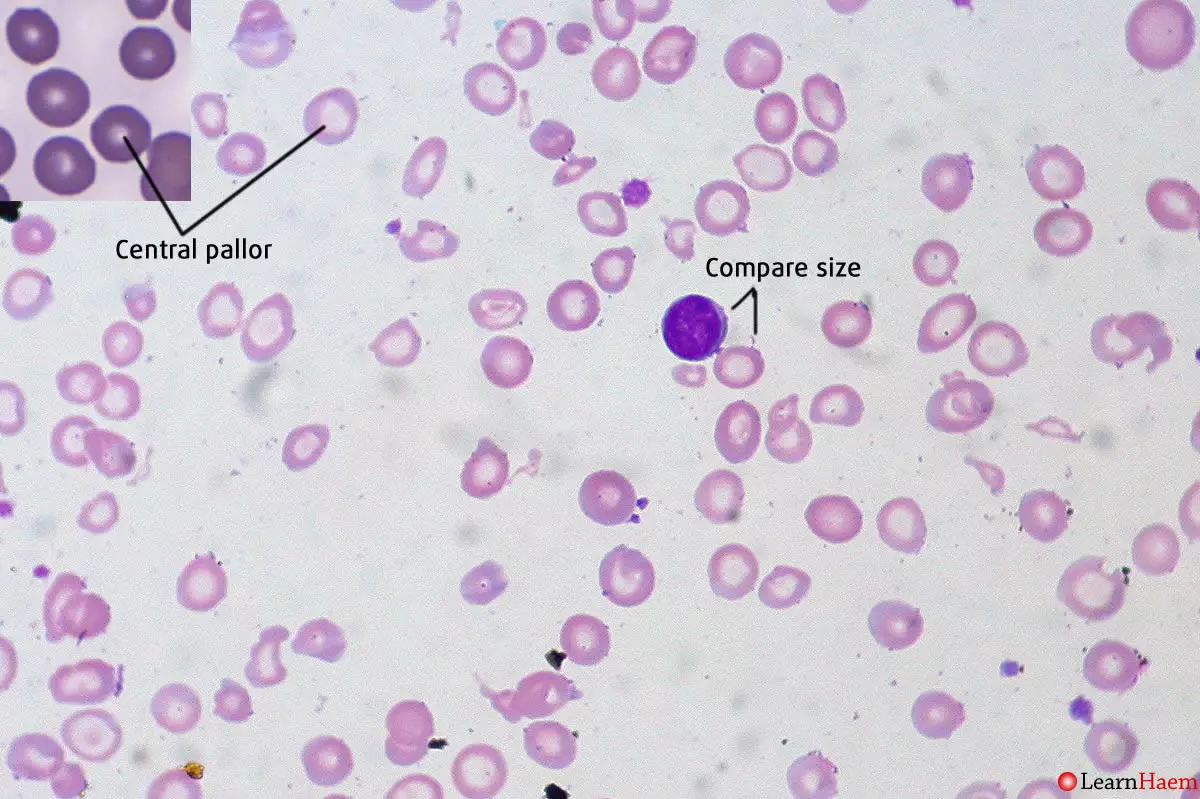Patients may present with symptoms or signs of anaemia (fatigue, dyspnoea on exertion, chest discomfort, pallor etc.). Alternatively, anaemia may be incidentally detected on a full blood count done for another reason.
Iron deficiency is usually characterised by a microcytic, hypochromic anaemia. The red cell distribution width is high, which is reflective of the anisopoikilocytosis (cells off different shapes and sizes) which typifies iron deficiency. In contrast to thalassaemia, the absolute red blood cell count is low, because of the haematinic deficiency. Thalassaemia is characterised by ineffective erythropoiesis and decreased rates of globin chain synthesis. Hence, the absolute red blood cell count in thalassaemia is often higher than expected for the haemoglobin level.
The figure below shows the blood film of a patient with iron deficiency.

Blood film of a patient with iron deficiency anaemia. This shows microcytosis, usually defined as a red cell smaller than 7µm. As a guide, red cells should be approximately the same size as the nucleus of a normal lymphocyte. Inset: normal red blood cells. Note the difference in the size of central pallor, which is demonstrative of hypochroma in the iron-deficient patient (image modified from Ed Uthman, Houston, TX, USA – Iron-Deficiency Anemia, Peripheral Blood SmearUploaded by CFCF, CC BY 2.0).


Leave A Comment